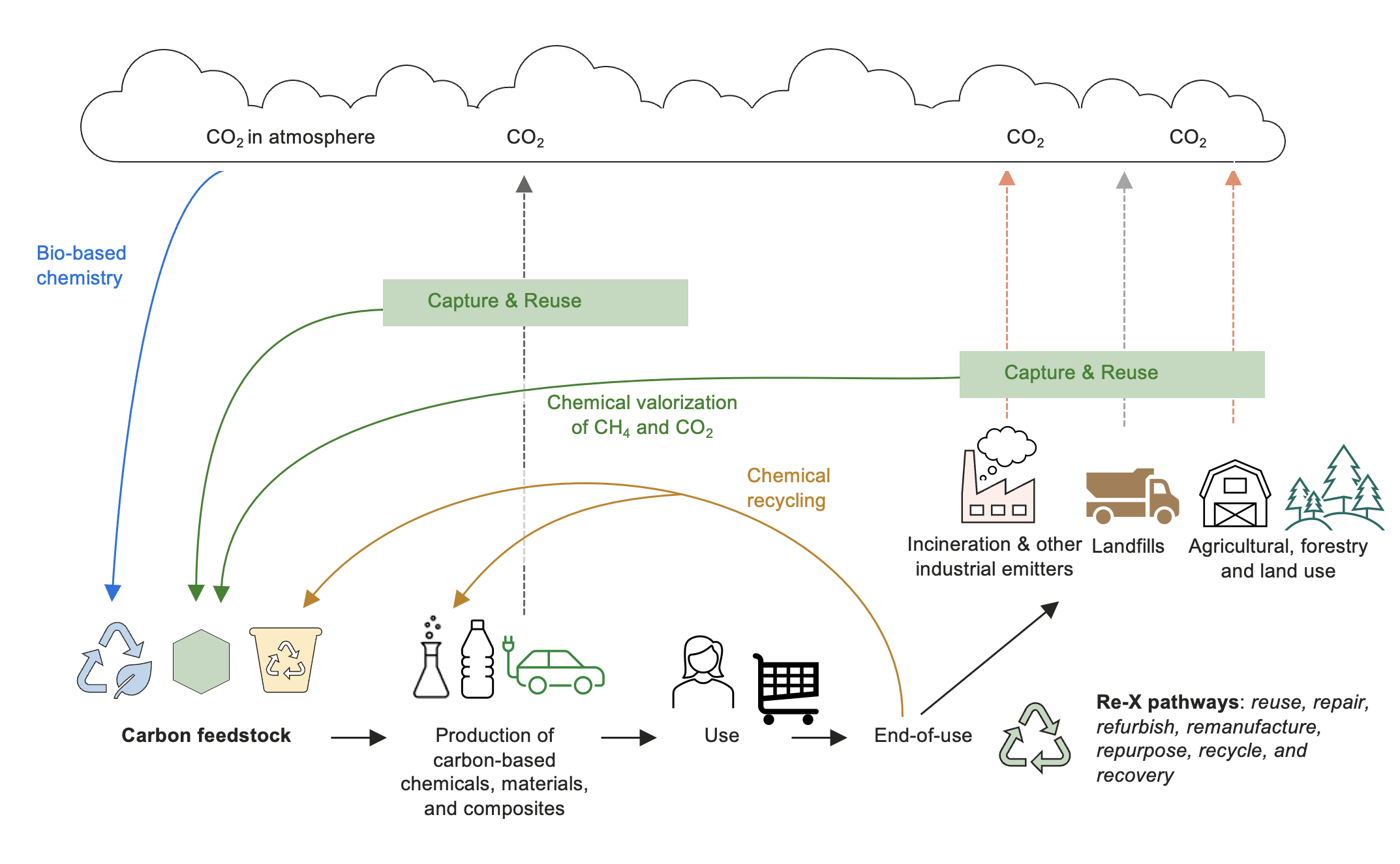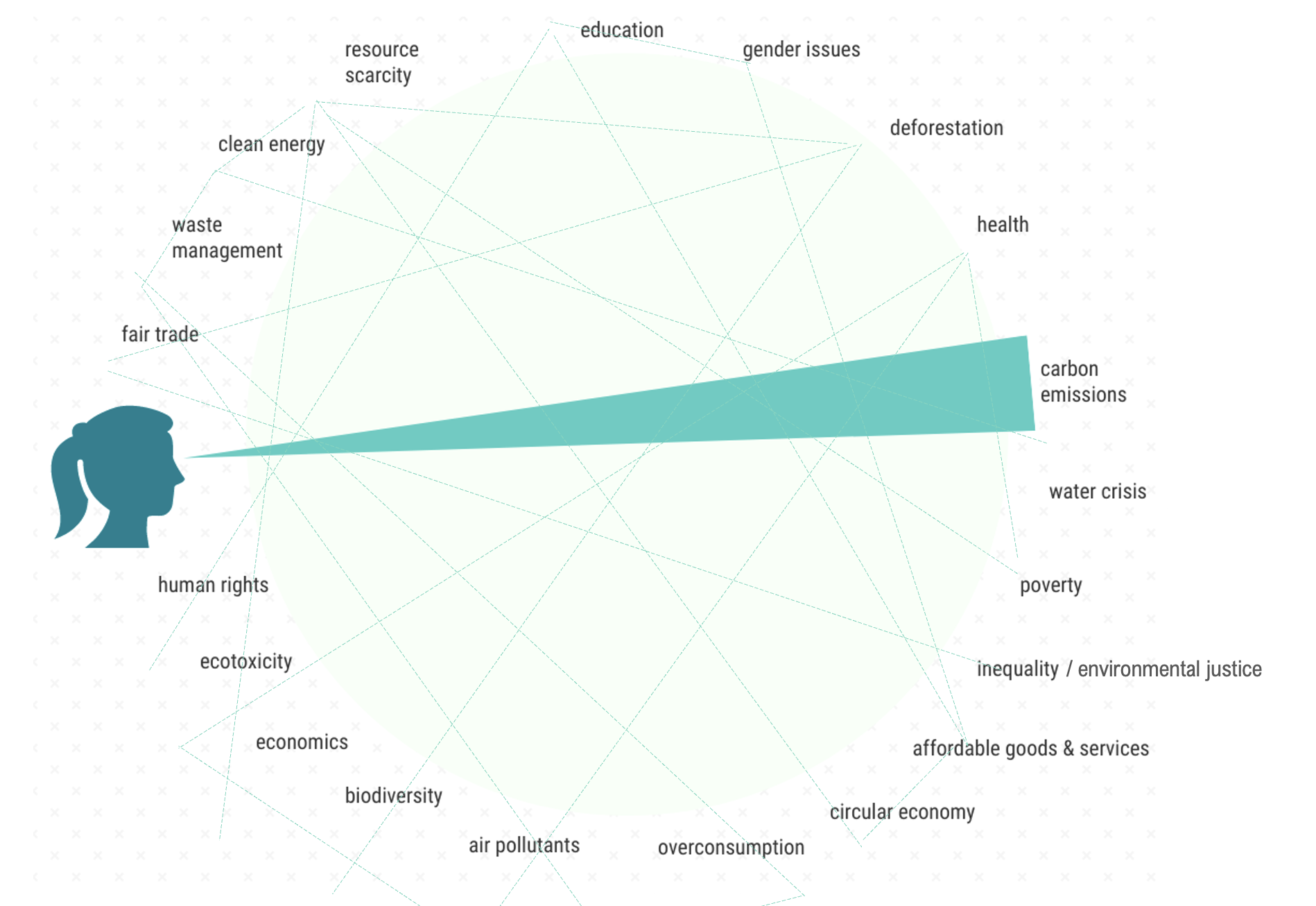Schrödinger’s Cat Paradox: Carbon Is the Enemy. Carbon Is Not the Enemy.

Table of Contents
Author(s)
Share this Publication
- Print This Publication
- Cite This Publication Copy Citation
Rachel Meidl, "Schrödinger’s Cat Paradox: Carbon Is the Enemy. Carbon Is Not the Enemy" (Houston: Rice University’s Baker Institute for Public Policy, August 9, 2023), https://doi.org/10.25613/5ED9-S212.
In an era with a growing focus on climate change, decarbonization, and low-carbon, zero-carbon, and negative-carbon solutions, one could easily think that carbon is the enemy. The continual onslaught of “war on carbon” rhetoric with its narrative of how and why the world should reduce or eliminate carbon is pervasive. To suddenly pronounce that carbon is not, in fact, an existential threat — but rather a valuable resource to propel society to a sustainable future — seems outrageously provocative and blatantly inconsistent. So, is carbon the enemy, or not?
Carbon Is Not the Enemy
While we understand that greenhouse gas emissions (GHG), including carbon dioxide (CO2), exacerbate anthropogenic climate issues, strategies on how to decarbonize and transition to a “post-carbon economy” continue to be vehemently debated. Yet carbon is one of the most abundant elements in the universe and the most abundant element in all living matter. It is omnipresent — it makes up the plastics in the cars we drive, the solar panels that provide electricity, the DNA in our cells, and even microorganisms in the vast ocean. Large amounts of carbon are also stored in soil. Carbon is a gregarious element without prejudice, its atoms combining with almost any other element to form more complicated building blocks of life.
How do we change the conversation around carbon, from being perceived as a global liability to a valuable resource? The transformation of carbon is the lifeblood of all things on Earth. Without the continuous complex reactions, interactions, and transformations of carbon between organisms and their environment, which perpetuate the carbon cycle, life on Earth would cease to exist. The natural cycle may be imbalanced, but all parts of the carbon cycle are still important to sustaining life.
Earth is a closed system, so the amount of carbon on the planet is constant: It never changes. However, the amount of carbon in specific reservoirs (e.g., plants, animals, microbes, soil, atmosphere) can shift over time as carbon travels from one reservoir to another through photosynthesis, respiration, biodegradation of plants and organisms, fossil fuel production, and other processes.
One way to challenge ingrained ideologies is to consider a systems perspective on how “carbon-to-value” functions in a circular carbon economy. A circular economy is one that reduces or even eliminates waste and pollution, keeps materials at their highest economic value, recirculates products and materials through the value chain, reduces use of non-renewable minerals, fuels, and feedstocks, and creates regenerative systems.
A circular carbon economy builds on the principles of a circular economy but centers on managing carbon at every point throughout the life cycle. It taps into all facets of the carbon cycle where carbon is a feedstock for producing carbon-based products (e.g., chemicals, fuels, materials) or is used to improve ecosystem balance through sequestration and soil nutrition (see Figure 1).
Carbon feedstock can be obtained in three ways:
- Bio-based chemistry that captures atmospheric carbon via photosynthesis using renewable biological resources such as biomass from land use, agricultural, or forestry processes to sequester and increase the uptake of carbon in the soil (e.g., biochar and other soil sequestration efforts).
- Chemical valorization of methane (CH4) from associated natural gas and other sources (landfills, agricultural operations, industrial sources, etc.) or emitted and captured CO2 produced from industrial sites before it enters the atmosphere.
- Chemical recycling of carbon-based “waste” that otherwise would be incinerated or sent to landfills.
At the end of first use, the carbon material or composite can then tap into one of the many re-X pathways: reuse, repair, remanufacture, repurpose, refurbish, or recycle. Although capturing CO2 and storing emissions from industrial processes does not recycle CO2 into next-generation products, it can keep the CO2 from adding to atmospheric CO2.
A promising upgrade of carbon is the use of CH4 as a feedstock to convert it to hydrogen and advanced carbon solids through pyrolysis — without the creation of CO2. The advanced solid carbon can supplement or displace energy-intensive materials such as steel, aluminum, other metals, concrete, and plastics in industries ranging from construction to transportation, decreasing the demand for resource-intensive primary minerals and materials.
Figure 1 — Circular Carbon Economy

Carbon Is the Enemy
We release nearly 37 billion tons of carbon (in the form of CO2) per year from fossil fuel reservoirs to power everyday life. We also exert influence on carbon stored in natural ecosystems by land use changes that alter systems through deforestation, grassland conversion, and agricultural intensification. Over the past 12,000 years, the growth of farmland has released about 110 billion metric tons of carbon from the top layer of soil, equivalent to 80 years’ worth of present-day U.S. emissions. We continue to deplete terrestrial carbon reservoirs while adding to the atmospheric pool, thrusting the carbon cycle further into disequilibrium.
While climate change and carbon emissions receive the most attention, these are just two of the many relevant and pressing issues within the domain of sustainability. Other examples that attract less attention — many of which are unquantified and unrealized in sustainability discussions — include environmental justice and social equity, human rights, biodiversity, water scarcity and quality, and waste management issues.
The propensity for “carbon tunnel vision” creates blind spots and leaves companies, economies, and governments maladapted, vulnerable, less sustainable, and far less resilient in the long run (see Figure 2). Systems sustainability or resiliency cannot be achieved by focusing on emissions or climate alone.
Moreover, climate policy does not directly incorporate long-standing issues such as Superfund sites, lead pipes in drinking water systems, aging and inadequate infrastructure, toxic air emissions, exposure to pesticides, energy poverty, and other matters that affect lower-income, socially vulnerable populations. These matters can be addressed through effective adaptation and resilience programs, not through policies that center primarily on emissions reduction and carbon management.
If the desired end state is systems sustainability and resilience, perhaps fixation on carbon is the enemy.
Figure 2 — Carbon Tunnel Vision

To Tackle Sustainability, Rethink the Carbon-To-Value Proposition
Underutilized carbon in the form of CO2 or CH4 emissions and other wastes is a liability, a breakdown of the carbon cycle, a design failure, and the result of human actions such as industrial activity, uncontrolled landfills, unregulated waste-to-energy plants, and littering. The idea of the circular carbon economy is to recover carbon-based materials and capture carbon-based emissions from hydrocarbon energy sources in ways to eliminate waste, support regenerative growth, and restore natural resources through biological and technical nutrients.
Everything is a resource for something else. Carbon released into the atmosphere can be captured and transformed into durable or living carbon. Durable carbon is a resource that is locked and sequestered in stable solids such as plastics and bioplastics that are manufactured and then reused, recycled, or composted. Living carbon is an organic asset, a vital ingredient flowing in biological cycles that provides fresh food, fertile soil, and healthy forests. In the right place, carbon is a resource whose materials can be harnessed and put to use through re-X opportunities.
Natural capital does not leave the biosphere — it just changes its configuration depending on how it is valued. When carbon is in the wrong form and the wrong place — and when society fails to recapture its value — only then is carbon the enemy. The continued demonization of carbon and failure to think in systems and cycles is shortsighted: It diminishes carbon’s significance as a resource in a circular carbon economy. Meanwhile the fixation on carbon and emissions as a standalone climate-based strategy is taking us further away from economic, social, and environmental sustainability.
Carbon needs a rebranding. The negative narrative is misplaced, especially when the circular economy concept is taking center stage in global sustainability planning for governments and industries. We need a metamorphosis in how carbon is messaged, characterized, and labeled. A new language that signals positive intentions can help rethink carbon in terms of natural capital in systems, as opposed to a global nemesis in need of subjugation.
Updated on April 5, 2024, at 1:05 pm CDT.
This material may be quoted or reproduced without prior permission, provided appropriate credit is given to the author and Rice University’s Baker Institute for Public Policy. The views expressed herein are those of the individual author(s), and do not necessarily represent the views of Rice University’s Baker Institute for Public Policy.



